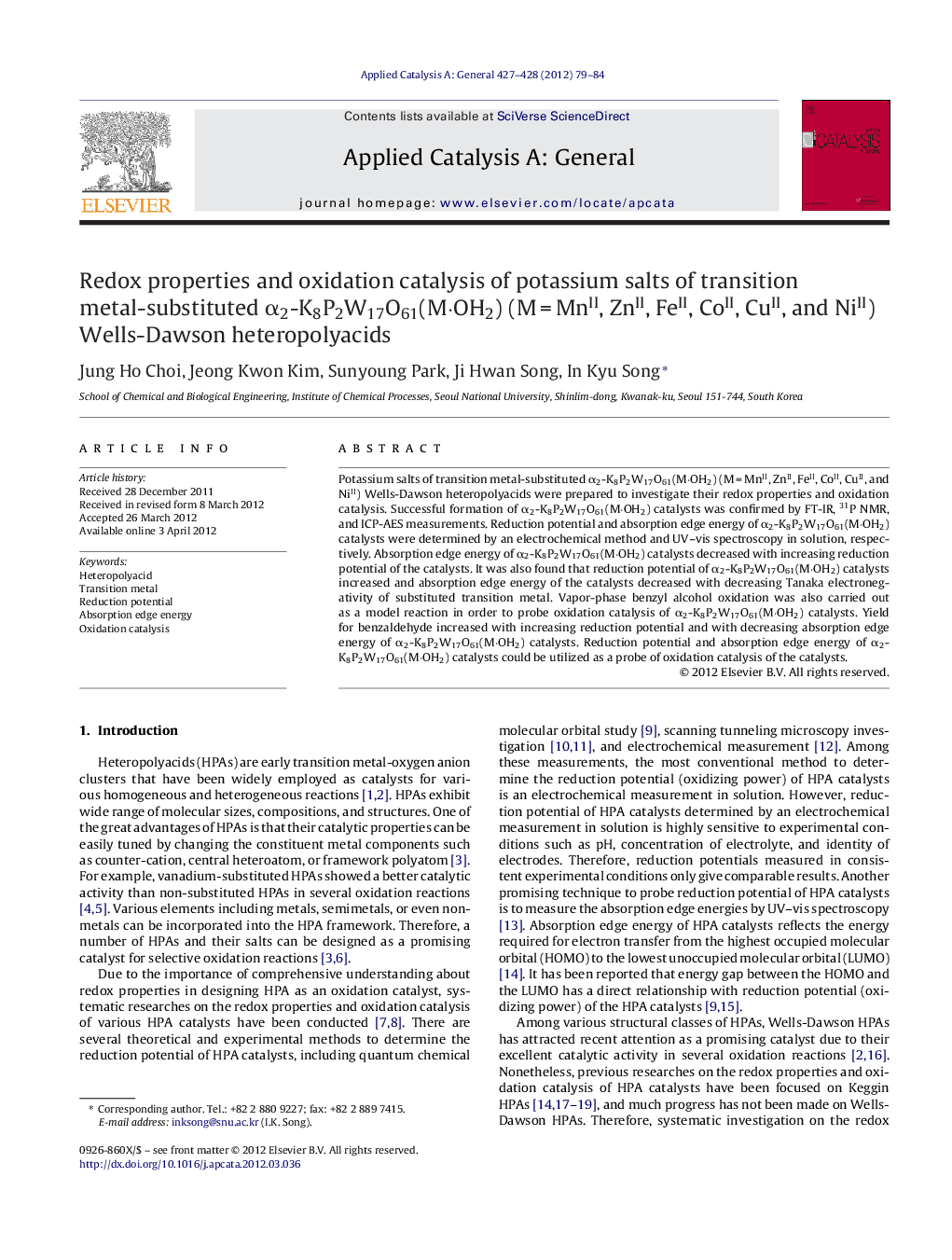| Article ID | Journal | Published Year | Pages | File Type |
|---|---|---|---|---|
| 40958 | Applied Catalysis A: General | 2012 | 6 Pages |
Potassium salts of transition metal-substituted α2-K8P2W17O61(M·OH2) (M = MnII, ZnII, FeII, CoII, CuII, and NiII) Wells-Dawson heteropolyacids were prepared to investigate their redox properties and oxidation catalysis. Successful formation of α2-K8P2W17O61(M·OH2) catalysts was confirmed by FT-IR, 31P NMR, and ICP-AES measurements. Reduction potential and absorption edge energy of α2-K8P2W17O61(M·OH2) catalysts were determined by an electrochemical method and UV–vis spectroscopy in solution, respectively. Absorption edge energy of α2-K8P2W17O61(M·OH2) catalysts decreased with increasing reduction potential of the catalysts. It was also found that reduction potential of α2-K8P2W17O61(M·OH2) catalysts increased and absorption edge energy of the catalysts decreased with decreasing Tanaka electronegativity of substituted transition metal. Vapor-phase benzyl alcohol oxidation was also carried out as a model reaction in order to probe oxidation catalysis of α2-K8P2W17O61(M·OH2) catalysts. Yield for benzaldehyde increased with increasing reduction potential and with decreasing absorption edge energy of α2-K8P2W17O61(M·OH2) catalysts. Reduction potential and absorption edge energy of α2-K8P2W17O61(M·OH2) catalysts could be utilized as a probe of oxidation catalysis of the catalysts.
Graphical abstractFigure optionsDownload full-size imageDownload high-quality image (146 K)Download as PowerPoint slideHighlights► α2-K8P2W17O61(M·OH2) heteropolyacids with different metals (M) were prepared. ► Reduction potentials were measured by an electrochemical method. ► Absorption edge energies were determined by UV–vis spectroscopy. ► Yield for benzaldehyde increased with increasing redox properties.
